The most beautiful varieties of lily-colored tulips: photo and description
Class 6. Lily-colored tulips.
Cultivated since the 16th century. A distinctive couple is the shape of the flower - elongated, graceful with petals bent outward and pointed at the ends. In the class, 3.0% of the total assortment.
Table "The most beautiful varieties of lily-colored tulips":
| Name varieties |
Breeder, year of registration | Plant height, cm | Flower color | Term flowering |
| Abrene | V. Skuya, 1992 | Creamy white with wide
crimson border |
WITH | |
| Aksinya | A.S. Koltsov, 1989 | Coffee shop | NS | |
| Aladdin | De Mol and A.G. Nieuwenhuis, 1942 | Orange red | WITH | |
| Ballerina | J.F. van den Berg & Sons, J.A. Boret, 1980 | The outside is crimson red. Inside is golden orange. | WITH | |
| Ballade | Nieuwenhuis Bros, 1953 | Red-violet with white border | WITH | |
| Burgundy | Grullemans and Sons, 1957 | Purple tinged | WITH | |
| West Point | De Mol, A.G. Nieuwenhuis, 1943 | Bright yellow | WITH | |
| Gauja | V. Skuya, 1992 | Purple crimson with white border | with | |
| Jacqueline | Zegers, 1958 | Dark pink | NS | |
| Krimulda | V. Skuya, 1992 | Raspberry with orange border | with | |
| Queen of Sheba | De Mol, A.G. Nieuwenhuis, 1944 | Brown red | with | |
| Lilac Time | De Mol, A.G. Nieuwenhuis, 1943 | Purple purple | with | |
| Liene | V. Skuya, 1992 | Pink | with | |
| Marjolene (Marjolein) |
P. Visser, 1962 | Carmine pink | with | |
| Moonlight Girl | V. Skuya, 1992 | Pale cream | with | |
| G. Merkel's Memory | V. Skuya, 1992 | Red with a narrow cream border | with | |
| Memory of Rosenstrauch
(Rosenshtrauh's Memory) |
V. Skuya, 1992 | Red crimson with a bright orange border | WITH | |
| Story | J.F. van den Berg
& Sons, J.A. Boret, 1979 |
Bright red with yellow dashed border | NS | |
| Mrs. Freestyle (Mrs. Freestail) |
V. Skuya, 1992 | White | NS |
In these photos, you can admire the most beautiful varieties of lily-colored tulips:


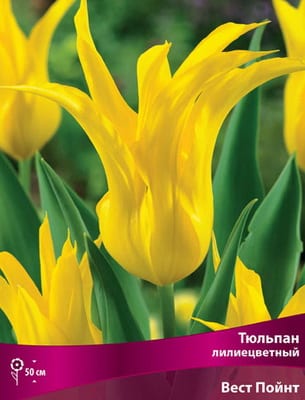
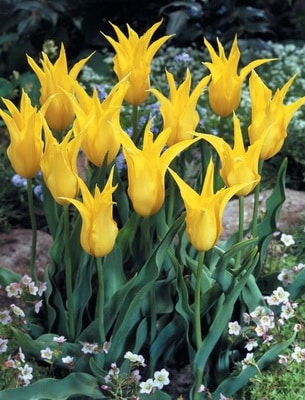
Tulip variety Artist.
Tulip variety Artist (see photo) is very good for creating group compositions with large-flowered, tall tulips. This flower is planted, as a rule, in the foreground, since it does not differ in high growth - it is maximally capable of stretching 50-55 cm, no more. Stems are thin, but dense, erect, surrounded by a not dense basal rosette of long, narrow leaves. It blooms once, not earlier than mid-May.
When the weather is warm, it opens lily-shaped flowers, with bent outward, pointed tips of the petals. The edges of the petals are painted in a pinkish-red hue, and the middle is emphasized by a wide stripe-stroke, green. The artist variety is more hardy than others, is less susceptible to diseases, but does not tolerate too low temperatures, so it needs shelter for the winter.
Pinocchio tulip variety
The Pinocchio tulip variety has one feature that makes it very attractive - it has a two-tone color. The tulip is undersized, like other representatives of the Greig tulip class - its stems are extended by 20-25 cm as much as possible, but they are straight, dense and powerful. In the second half of May, the flowers begin to bloom. The height of the elegantly shaped glasses is up to 8 cm.
The petals are painted in a crimson red, a bright shade with contrasting, snow-white stripes along the edges. The basal leaves are much narrower than that of other Greig tulips, about 20 cm in length, with a uniform light green shade or with the presence of subtle, threadlike burgundy stripes. The Pinocchio tulip reproduces wonderfully, vegetatively and by seed, and needs regular replanting.
Fringed and green-flowered tulip varieties
Fringed. This newest group of tulips unites varieties of different origins, flowering periods, degree of terry, according to the only common feature - the presence of a needle-like fringe along the edges of the petals. They are ideal for cutting, many are excellent for forcing
Plants of this group always make an impression and enjoy the increased attention of flower growers.
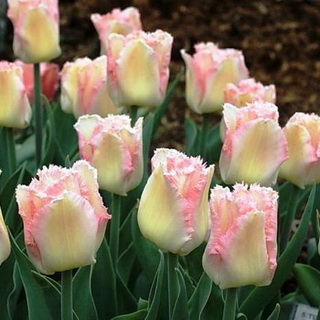
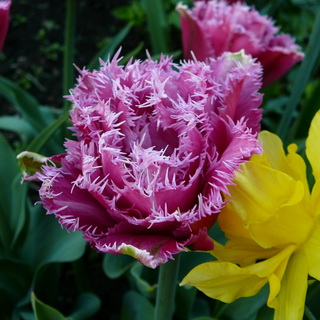
Among them are magnificent varieties that bloom simultaneously with Darwin's hybrids: bright red Fringed Apeldoorn and Crystal Beauty;

Tulip "Fringed Elegance" - ivory with long fringes. These fringed tulips are suitable for both cutting and winter forcing.
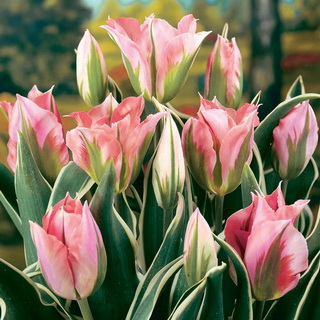

Green-flowered. All varieties of this class have flowers of various colors, but with one common feature - a green vertical stripe on the outer surface of the petals. The flowering of green tulips is long lasting, probably due to photosynthesis in the petals themselves. Breeders strive to create varieties with green flowers in each crop. But if, for example, in gladioli we are talking only about shades, then in tulips, green is the most real. The varieties of this group are always late, flower stalks can be both high and low. Green-flowered tulips are very trendy lately.
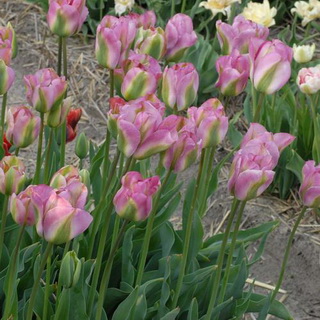
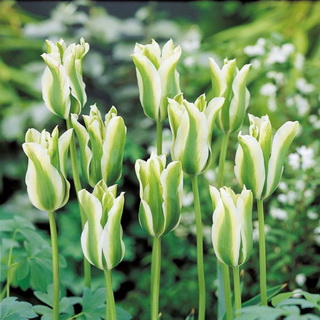
The most famous varieties are Hollywood - green with a red border, low, large-flowered; "Greenland" - green with a wide pink border, high; Spring Green - green with a wide white border, tall.
Look at the photos of the species and varieties of tulips of the fringed and green-flowered class:
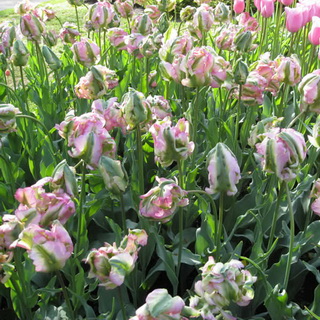
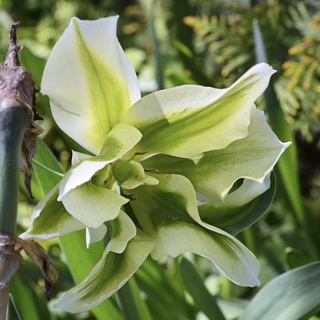
Diseases of tulips and their treatment.
The most dangerous tulip diseases are:
gray mold is a fungal disease that manifests itself as individual yellow or brown spots that appear on the leaves of a tulip. Over time, the spots merge, and a whitish spore bloom appears on the leaves. Prolonged cold and damp weather is a provoking factor of the disease. After the disease affects the base of the stem, the tulip dies.

soft rot is a fungal disease in which the tulip bulbs become watery and the affected area turns pink. Gradually the plant decays. If the disease began during the growing season of the tulip, then the leaves of the flower turn yellow, the buds dry and do not bloom, and the tulip gradually withers.

fusarium tulip is a fungal disease affecting the flower bulb. Signs of infection appear towards the end of the growing season. This is reflected in a slowdown in the growth of a tulip until it stops completely. The diseased bulb becomes soft, blackens and dies off. Symptoms of a tulip infestation with Fusarium can be seen in storage. They are manifested by the appearance of reddish spots on the surface of the bulb, which are soon replaced by a pinkish spore bloom.

tulip variegation is a viral disease that affects lily tulips. It appears as gray, silvery or light green streaks and stripes on plant leaves. Infected bulbs become smaller, stunted, and then die over time. The virus can be transmitted by aphids or other insects, as well as garden tools.

To combat fungal diseases, preventive plant treatments are used with a 1.5% suspension of colloidal sulfur or 1% Zuporen solution. Nematodes and rodents that spoil the bulbs bring considerable damage to tulips.
Storing tulip bulbs
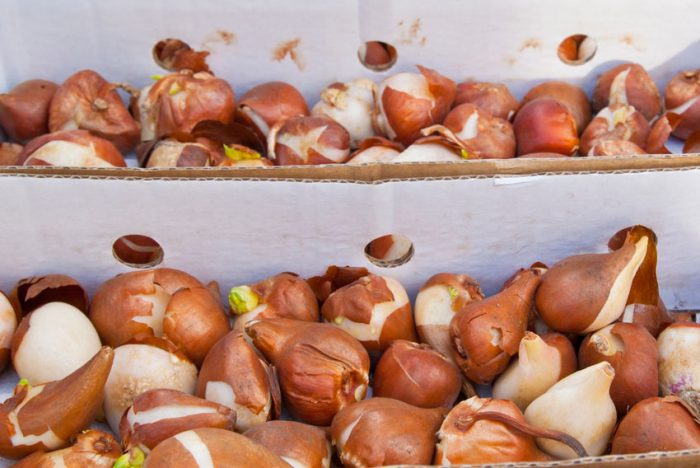
The bulbs removed from the ground should be thoroughly rinsed under running water and put on for 30 minutes. in 3-4% solution of karbofos, you can take them for 10 minutes. immerse in water with a temperature of 50 degrees. Place the bulbs in a dry, well-ventilated, dark place with a temperature of 25 to 30 degrees in 1 layer. The bulbs dried for 3-5 days are removed for storage.
Preparation for storage: remove old roots and scales from the bulbs, separate the babies that come off without effort. Distribute by size. Sprinkle the bulbs in 1 layer into trellis boxes, and then move them to a well-ventilated place with diffused lighting, for example, in the attic or in the barn. Do not cover them, because children may die, as the bulbs release ethylene.Until the beginning of autumn, the temperature should be maintained at about 20 degrees, later it can be reduced to 17 degrees. Inspect the bulbs systematically every 7 days. Destroy soft bulbs, as well as those that have light yellow or whitish spots (signs of decay). Before planting in the fall, process the planting material with a potassium manganese solution.


